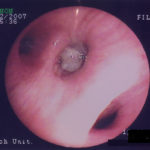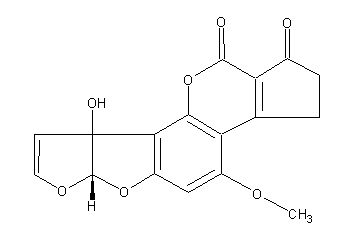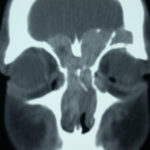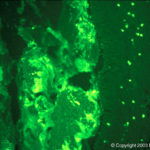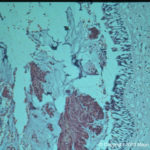Date: 26 November 2013
Secondary metabolites, structure diagram: Trivial name – aflatoxin M1
Copyright: n/a
Notes:
Species: A. flavus, A. parasiticusSystematic name: Cyclopenta[c]furo[3′,2′:4,5]furo[2,3-h][1]benzopyran-1,11-dione, 2,3,6a,9a-tetrahydro-9a-hydroxy-4-methoxy-, (6aR-cis)-Molecular formulae: C17H12O7Molecular weight: 328.28Chemical abstracts number: 6795-23-9Selected references: Nakazato, Mitsuo; Morozumi, Satoshi; Saito, Kazuo; Fujinuma, Kenji; Nishima, Taichiro; Kasai, Nobuhiko (Dep. Food Hyg. and Nutr., Tokyo Metrop. Res. Lab. Public Health, Tokyo 169, Japan). Eisei Kagaku, 37(2), 107-16 (English) 1991.Toxicity: Slightly less toxic than aflatoxin B1 with an oral LD50 for the one day-old duckling 0.46 mg/kg body-weight. Significantly less carcinogenic than aflatoxin B1.
Images library
-
Title
Legend
-
4 Total obstruction of the sinuses due to inflamed mucosa. (Patient 04)
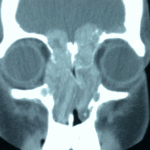
-
1 Axial computed tomography (CT) scans of the frontal sinus.
A: due to the long lasting pressure of mucus, the bone of the anterior wall of frontal sinus is thinned out and elevated anteriorly, forming a bulge. B: same situation as depicted in fig A: the posterior bony wall of frontal sinus is thinned out and extremely elevated posteriorly towards the frontal lobe of the brain. As depicted on the scan, a thin bony layer covering the dura could be recognized intraoperatively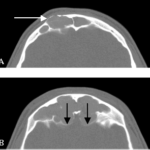
-
2 Same patient as 1 and 3, frontal CT
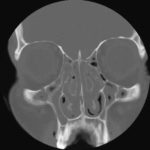
-
D. 6 months later, tenacious yellow secretions in L basal bronchial division

-
C. After suction the material was seen to extend distally – obstructing the right basal stem bronchus
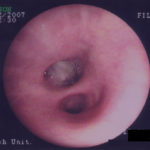
-
B. After suction the material was seen to extend distally – obstructing the right basal stem bronchus
